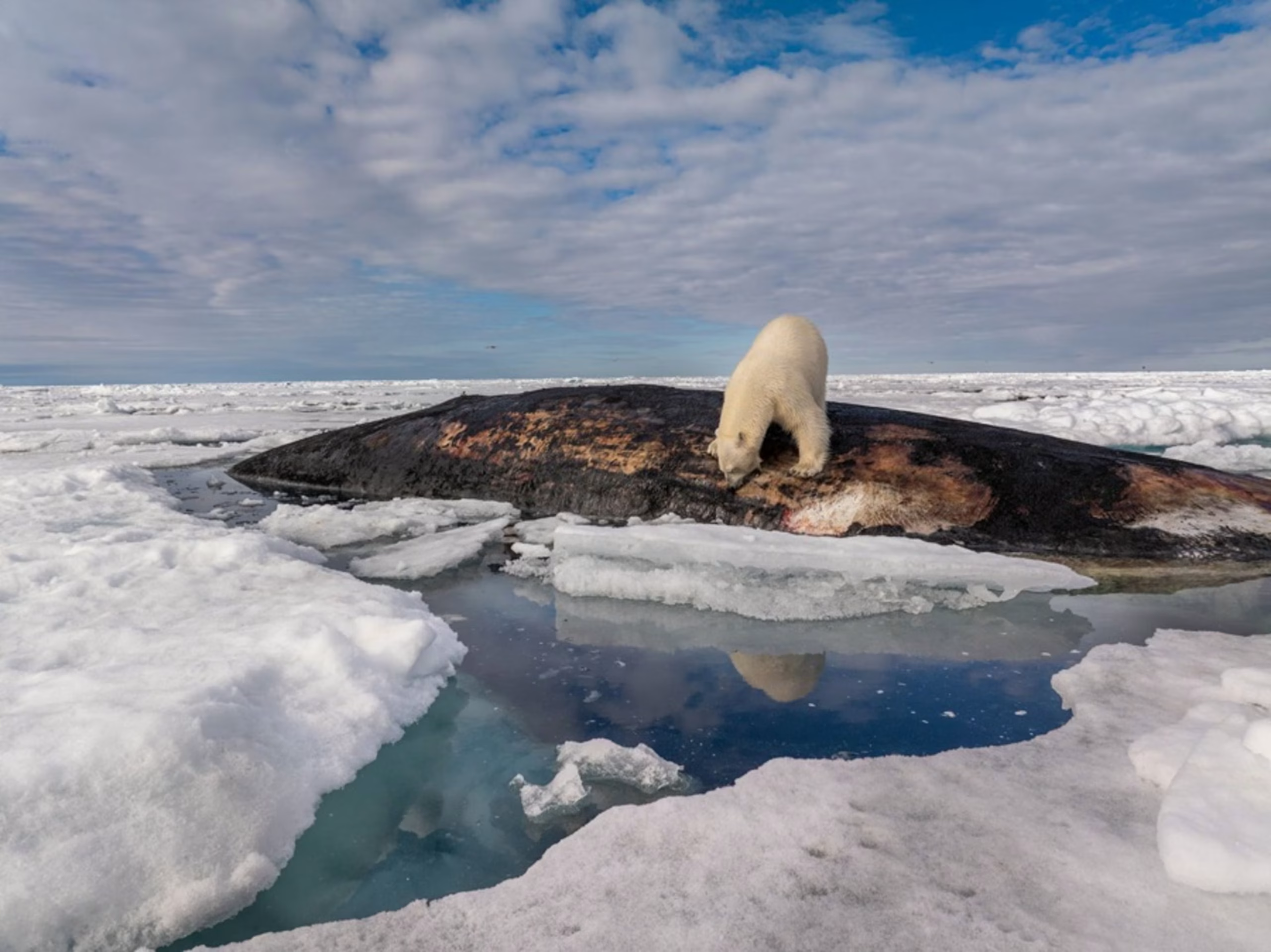A Masterpiece of Survival: Polar Bear on a 40-Ton Sperm Whale
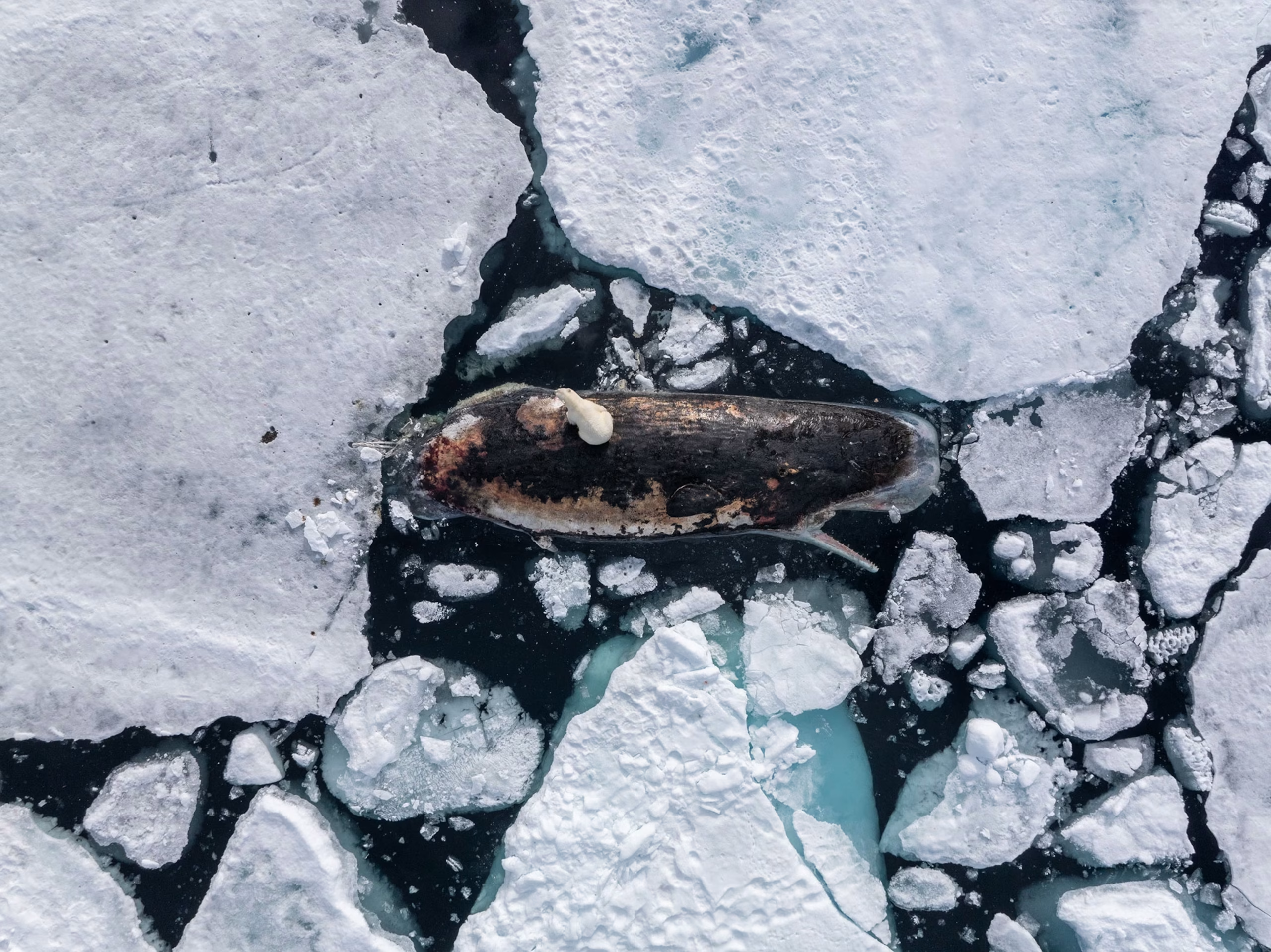
In a rare and breathtaking Arctic moment, nature laid bare its dramatic scale and relentless power. A female polar bear, weighing around 300 kilograms with her iconic white fur, was spotted perched atop the massive carcass of a male sperm whale, which tipped the scales at over 40 tons. The sight is utterly staggering: the bear, formidable in her own right, looked almost minuscule against the immense bulk of the whale, painting a vivid picture of the sheer scale of life in the far north.
The whale had died farther south and drifted north on powerful ocean currents and winds, ultimately arriving in the bear’s hunting grounds. In the harsh, food-scarce environment of the Arctic, such a carcass is a crucial lifeline, providing vital nourishment for polar bears and other wildlife. Attracted by the scent, the bear seized the rare opportunity, climbing atop the whale to feed—a striking illustration of survival at the very extremes.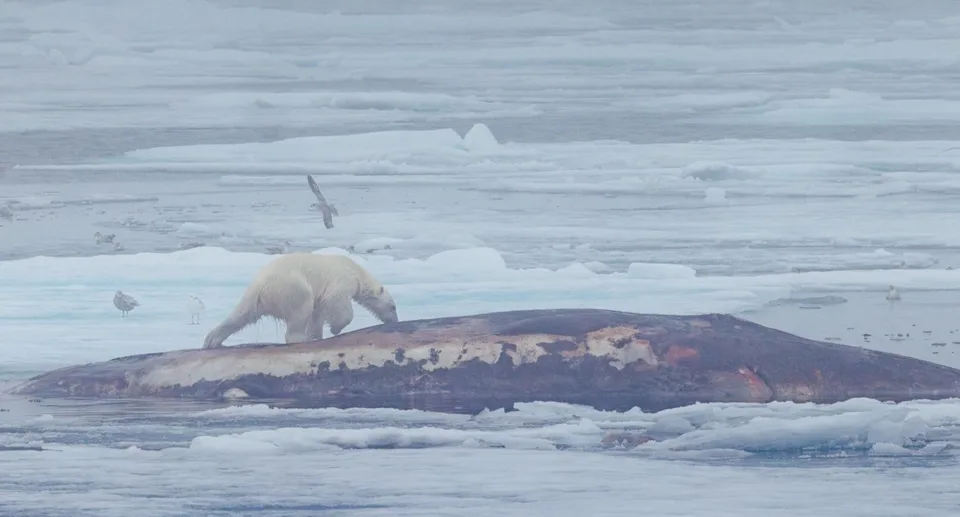
This extraordinary encounter captures the stark realities of life in the Arctic: the delicate balance between predator and opportunity, the immense power of nature, and the incredible adaptability required to endure a changing environment. It serves as a powerful reminder of the intricate connections between ocean and ice, between different species, and between sheer chance and survival.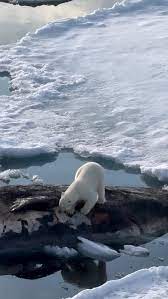
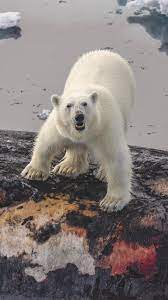
Beyond the dramatic and stark imagery, the moment speaks volumes about resilience. Polar bears, the very symbols of the Arctic, face mounting pressures from climate change and the alarming disappearance of sea ice. Yet here, in this frozen wilderness, the bear makes the most of the resources nature provides, demonstrating both the fragility and the tenacity of life in the far north. It is a powerful image, reminding us that even under the most dire circumstances, hope is found in the resourcefulness of the wild.